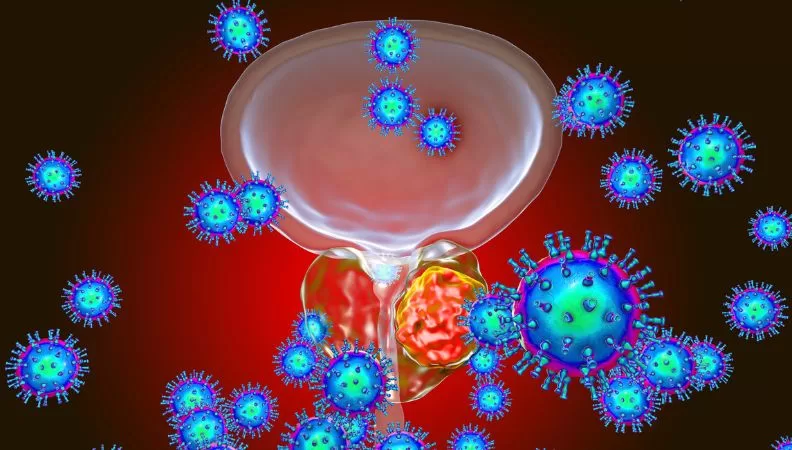Prostate Health: Prevention and Early Detection for Better Quality of Life
The prostate is one of the more significant aspects of a man’s wellness. Due to the increase in men developing benign prostatic hyperplasia, prostatitis, and prostate cancer, understanding prostate health and risks is important. The small prostate gland is essential to both reproduction and urinary health. Many men suffer from prostate problems as they age, but proper knowledge and measures can minimize the impact of such conditions. Prostate Health Prevention strategies, including regular screenings and healthy lifestyle choices, can greatly improve outcomes. Early detection and proactive approaches are key to managing prostate issues effectively and ensuring a better quality of life.
Understanding the Prostate Gland and Its Role in Health
The prostate, a walnut-sized gland below the bladder and in front of the rectum, produces seminal fluid and helps control urine flow by surrounding the urethra.
The prostate plays a central role in both fertility and urinary function. Even with age, the prostate changes in ways that can lead to several health issues, making regular monitoring important for general health.
Common Prostate Conditions: BPH, Prostate Cancer, and More
Benign Prostatic Hyperplasia (BPH): The prostate enlarges with age; it is one of the benign enlargement conditions and may cause problems like frequent urination, hesitant initiation of urination, or weak urine stream. BPH is uncomfortable and disrupts daily life but can be treated with medications or surgery in severe cases.
Prostate Cancer: Prostate cancer is among the most prevalent cancers in males. It generally progresses slowly and, in early stages, many men are asymptomatic. When the cancer is advanced, though, it often causes severe symptoms. Prostate cancer can frequently be treated very effectively if diagnosed early, and that is why regular screenings are so important.
Prostatitis: Inflammation or infection of the prostate gland can lead to painful urination, pelvic discomfort, and flu-like symptoms. Prostatitis may be acute or chronic and is typically treated with antibiotics or other medications depending on its cause.
Risk Factors for Prostate Problems: Age, Lifestyle, and Genetics
Understanding the risk factors for prostate issues can help men take preventive measures before conditions like prostate cancer or BPH develop.
Age: Prostate problems are more common in older men, with the risk increasing significantly after the age of 50. BPH and prostate cancer are particularly prevalent in men over 60.
Genetics: Family history plays a significant role. Men with a father or brother who has had prostate cancer are at a higher risk of developing the disease themselves.
Lifestyle Factors: Diet, physical activity, and smoking habits can all affect prostate health. A diet high in red meat and low in fruits and vegetables, combined with a sedentary lifestyle, can increase the risk of prostate problems. Smoking also elevates the risk of prostate cancer.
Ethnicity: Prostate cancer risk is more common in African-American men, followed by other ethnicities, but in the case of Asian-American men, the risk is somewhat lower.
Signs and Symptoms of Prostate Conditions: What to Watch For
Prostate disorders usually result in alterations in urinary habits or sexual function. Recognition of the symptoms becomes early for diagnosis and treatment:-
Difficulty urinating: Trouble starting or stopping urination, frequent urination, especially at night, or a weak urine stream are signs of possible prostate issues.
Painful urination or ejaculation: Pain or a burning sensation during urination or ejaculation can indicate prostatitis or infection.
Blood in urine or semen: A rare but alarming symptom that should be investigated immediately, as it can be associated with prostate cancer or severe inflammation.
Fatigue or unexplained weight loss: Especially with prostate cancer, men may experience fatigue, weight loss, or reduced appetite as the disease advances.
Prostate Cancer: A Closer Look at Risks and Early Detection
Prostate cancer begins in the prostate gland and spreads to other parts of the body over time. Although it may grow slowly in most cases, the disease is aggressive and dangerous if not treated in time. The risk for prostate cancer is age-related and also depends upon family history.
Why Early Detection Matters: Early detection of prostate cancer highly improves the chances of successful treatment and survival. Regular screenings help identify the disease at stages when doctors can easily treat and manage it. If detected early, the five-year survival rate for prostate cancer is nearly 100%.
Prevention Strategies for Prostate Health
Preventing prostate problems requires a proactive approach to health:-
Diet: A balanced diet with a high content of fruits, vegetables, whole grains, and lean proteins helps keep the prostate healthy. Cruciferous vegetables like broccoli and cauliflower are particularly beneficial for maintaining prostate health.
Exercise: Regular exercise helps regulate hormones, reduce inflammation, and maintain a healthy weight for great prostate health.
Avoiding Overindulgence in Alcohol and Smoking: Quitting smoking or reducing alcohol consumption can reduce the risk of having prostate problems, including cancer.
Diet and Prostate Health: Foods for Optimal Function and Wellness
Whatever you eat greatly determines prostate well-being. Prostate function benefits from foods as rich in antioxidants as green tea and lycopene, from tomatoes. Fat is healthy. Omega-3 fatty acids that are found in fish reduce inflammation and enhance prostate health.
The reduction of saturated fats from red meats and processed foods also plays an important role in reducing the risk of BPH and prostate cancer.
Exercise and Prostate Health: How Physical Activity Supports Wellness
Through the power of exercise, prostate diseases and conditions could be prevented. Exercise improves circulation, balances hormones, and reduces body fat, supporting prostate health. Strength, cardio, and pelvic exercises help prevent BPH and urinary issues.
Early Diagnosis of Prostate Problems: Importance of Screenings
Early detection of prostate problems, especially prostate cancer, can save lives. The main methods of early detection involve Prostate-specific antigen (PSA) testing and digital rectal exams (DRE).
PSA Testing: PSA testing measures the level of PSA in the blood. Doctors may find elevated levels of PSA to be a sign of prostate cancer or other prostate conditions, although they also associate higher levels with BPH or prostatitis.
DRE: The healthcare provider may perform a DRE, which involves feeling up in the back for abnormalities or lumps in the prostate. For most men with localized prostate cancer, this test may serve as an early detection method.
Prostate Cancer Screening Guidelines
The American Cancer Society recommends men begin prostate cancer screenings at age 50, or earlier (40-45) if they have a family history or are African-American.
Advanced Detection Methods
Some occasions require more detailed detection methods for accurate diagnosis of prostate conditions:-
MRI: Magnetic resonance imaging can help determine the detailed picture of the prostate for the possible detection of anomalies.
Biopsy: In the case of a suspicion of cancer, a biopsy, which takes small samples of tissue from the prostate for an examination, is the only positive test for prostate cancer.
Psychological Impact of Prostate Health Concerns
It can be emotionally taxing when dealing with prostate health issues, especially prostate cancer. A diagnosis or treatment may cause significant stress, anxiety, or depression for many men. Healthcare providers may offer emotional support, counseling, and participation in support groups to help the men deal with the psychological impacts of prostate health concerns.
Medical Treatment Options for Prostate Issues
The treatments vary with the condition. For BPH, medications include alpha-blockers and 5-alpha-reductase inhibitors. Prostate cancer treatment includes surgery, radiation, hormone therapy, and chemotherapy, depending on the cancer’s stage and aggressiveness.
Living with prostate health issues
The patient with prostate health issues, either BPH or prostate cancer, needs lifelong care and management. Men should stay in regular contact with healthcare providers, live healthily, and seek emotional support to enhance their quality of life.
Conclusion
Prostate health is an important part of a man’s well-being, especially in the later years of life. Prostate Health Prevention is key to lowering the risk of prostate issues like benign prostatic hyperplasia, prostatitis, and prostate cancer. By embracing Prostate Health Prevention strategies, including regular screenings and a balanced diet, men can proactively manage their prostate health.
Understanding symptoms, risks, and treatments helps men make informed decisions, prioritizing Prostate Health Prevention. With early detection and lifestyle adjustments, Prostate Health Prevention can significantly improve the quality of life and overall well-being.



